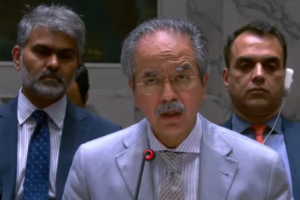Remember when a donation to a big charity was acknowledged with a certificate of philanthropic appreciation? Well, those days are gone. Today, donors need more. They want to know where their funds are going, and how their contribution is impacting progress. This ideological shift in the concept of charity can be attributed to one of the biggest developments since those times – The Digital Revolution. It should come as no surprise then, that the development sector is exploring the world of audio-visual, mobile, and social media possibilities. One of the biggest shifts in charity, after the digital revolution hit India, is the target audience.
Back in the day, NGOs and non-profits looked for people with heavy philanthropic backgrounds, and large businesses that were involved in social work, to direct all their fundraising activities at. However, new ways of communication and the sharing of information have enabled a paradigm shift that focuses on the masses. Take, for instance, the ALS ice bucket challenge, where the virility of the campaign had the whole world drenching themselves in buckets of ice water. But the monetary difference it made to the sufferers of ALS disease was unmatched. All they did was mobilize large crowds of people, and engage them in an activity. The ice bucket challenge wasn’t the only such campaign. There was even the ‘no makeup selfie challenge’, to raise funds for cancer patients. All of these were roaring campaigns that owe their success to the digital revolution. The now focuses its energies on quantity, rather than quality.
The act of ‘sharing’, ‘liking’, and ‘tagging’, on portals like Facebook, YouTube, Twitter, and Instagram, now have as much value as an actual donation. Many organizations working in the development sector have recognized the potential of the crowd and applied it to fundraising. What it has given us, is the concept of ‘crowdfunding’. Even if a person is unable to make a financial contribution towards a cause, a share on social media holds immense value for charities too. So if you can get a number of people to support a campaign just by involving them in it, using the tools of social media, you’re actually adding as much value through awareness, as you would add through donating money. Another aspect that the digital revolution has deeply impacted in terms of the act of giving, is the ease with which you can transfer money.
You’d imagine that earlier when someone had to donate money to charity, they actually had to count wads of cash and have it physically delivered to the NGO. Or else you’d actually have to write out a check, which will then need to be deposited at a bank. If you belong to generation Y, then it probably sounds a bit inconvenient, isn’t it? Of course, these methods are still used by many, but when donating through a crowdfunding platform in India , you’d use online transfers. You might say that online payments are just a small luxury, and shouldn’t make that much of a difference to people who actually want to do charity. But you will be surprised at the number of people who can actually be incentivized to donate just by making the process as quick and easy as possible. An added benefit of online donations is that the donor feels less of a pinch when shelling out a sum of money. It’s just the way the human mind works.
Social progress and development is an ongoing process, and charity is the cornerstone. It’s time that charity is adapted to concepts like crowdfunding in India that are born out of digital advancements. The digital revolution has brought in both, opportunities as well as challenges, and charities must embrace them, for the ultimate goal is to add value to society.
Author: Utkarsh Sharma is living in India. Utkarsh Sharma is part of our authors community.
























